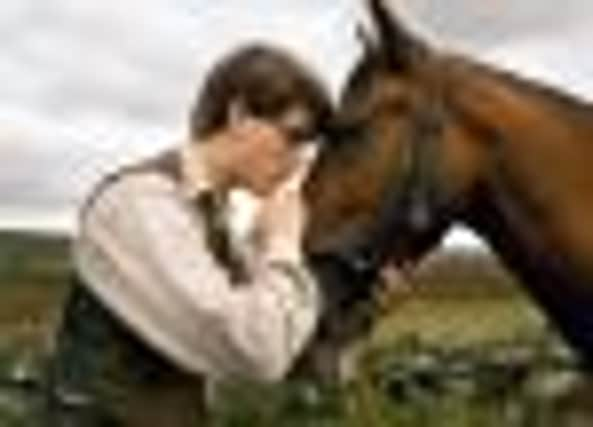Ministry of Defence urged to improve animal treatment


But the modern-day army’s treatment of its horses has come in for criticism, after it emerged some are being put down simply because of their “temperament”.
The Ministry of Defence has been urged to show “greater transparency” over how it treats animals in the armed forces after it was disclosed 28 army horses were put down in 2011 – 16 more than in 2009.
Advertisement
Hide AdAdvertisement
Hide AdAs Spielberg’s War Horse continues to play in UK cinemas, animal charity HorseWorld called on the MoD to reassure members of the public concerned that ex-army horses might have been put down unnecessarily.
Figures show that, while most of those put down had suffered physical health problems, four horses were destroyed last year due to their “temperament”.
As the blockbuster film – which shows one horse’s challenging journey from a Devon farm to the battlefields in France – raises awareness of the use of horses by the army, there are increasing concerns about why military animals are put down, the charity said.
A written parliamentary answer from defence minister Andrew Robathan to a question from MP Kevan Jones showed that, of the 28 horses that were euthanased in 2011, ten were put down due to lameness, seven because of colic, three due to injury, three for neurological reasons one for malignancy and four because of their temperament.
In 2009, 12 horses were put down - eight due to lameness, one due to injury and three due to their temperament.
Staff at HorseWorld have written to the MoD voicing their concerns that an animal’s temperament might not be reason enough to destroy it.
Its equine welfare director Jerry Watkins said: “Alternatives to euthanasia always need to be properly considered when an animal reaches the end of its working life.
“Members of the public might understandably feel these new figures pose serious questions.
Advertisement
Hide AdAdvertisement
Hide Ad“We have no reason to believe the MoD is not following correct principles and practices, but the public will want to be assured that, in each case, every alternative was considered, and will be in future.
“Publication of case notes of the animals that were put down due to temperament could help provide this reassurance, or the MoD may have other ways of doing so which makes things more transparent.”
Among the animals HorseWorld has looked after in the past decade is former army horse Mountjoy, who was retired to the charity in 2003.
During his military career, Mountjoy was the charger of Lieutenant-Colonel Crispin Lockhart – now commanding officer of the Household Cavalry – when he was a squadron leader.
Mountjoy died in 2008 after five years at the centre, including a period where he was rehomed.
The Household Cavalry Mounted Regiment and the King’s Troop are the two regiments that use horses, which are sourced from Ireland.
A MoD spokesman said: “Our animals play an invaluable role on military operations in Afghanistan and elsewhere and are much loved by the troops.”
He went on: “Healthy animals are rehomed. However, due to the challenging nature of their work, a small minority of our horses sometimes get injured or contract illnesses that sadly result in them needing to be put down.”
Advertisement
Hide AdAdvertisement
Hide AdThe spokesman stressed that only a “small minority” of the army’s animals needed to be put down.
Scottish SPCA Chief Superintendent Mike Flynn said, “If a horse is suffering from ongoing health problems or is deemed too dangerous to be rehomed, we would accept that it is put to sleep on veterinary advice.
“We would hope that all working horses who do not have health or temperament problems would be retired to a suitable home when they reach the end of their working lives.”
Based on the children’s novel by Michael Morpurgo, War Horse tells the story of a farm horse sold to a member of the cavalry at the outset of the First World War.
Cavalry units had remained popular with armies until the start of that conflict, but increasingly fell out of favour after 1914 due to the animals’ vulnerability to machinegun and artillery fire.